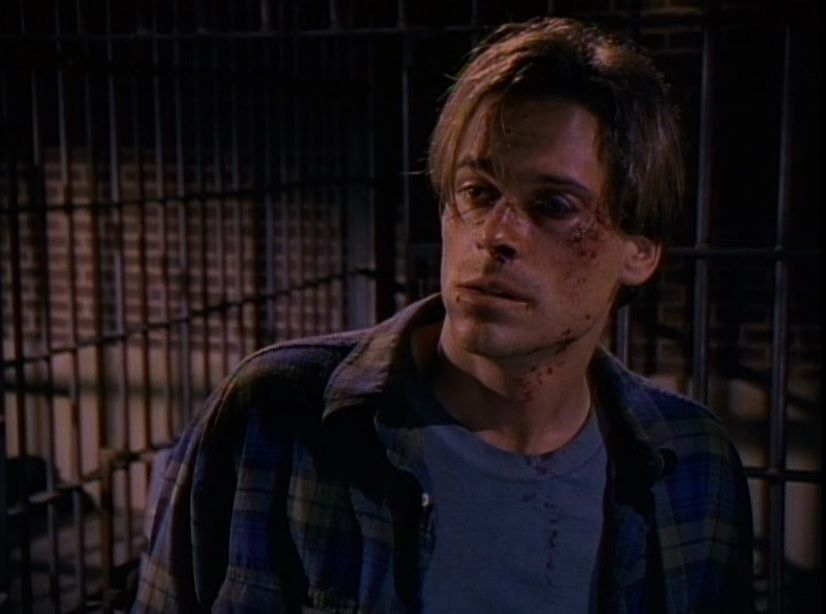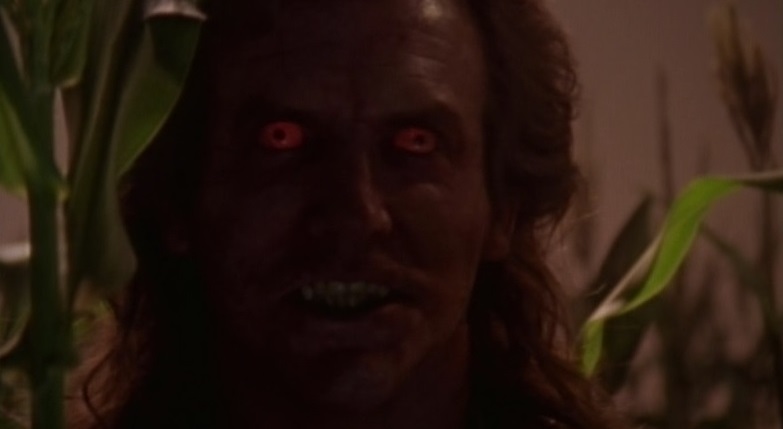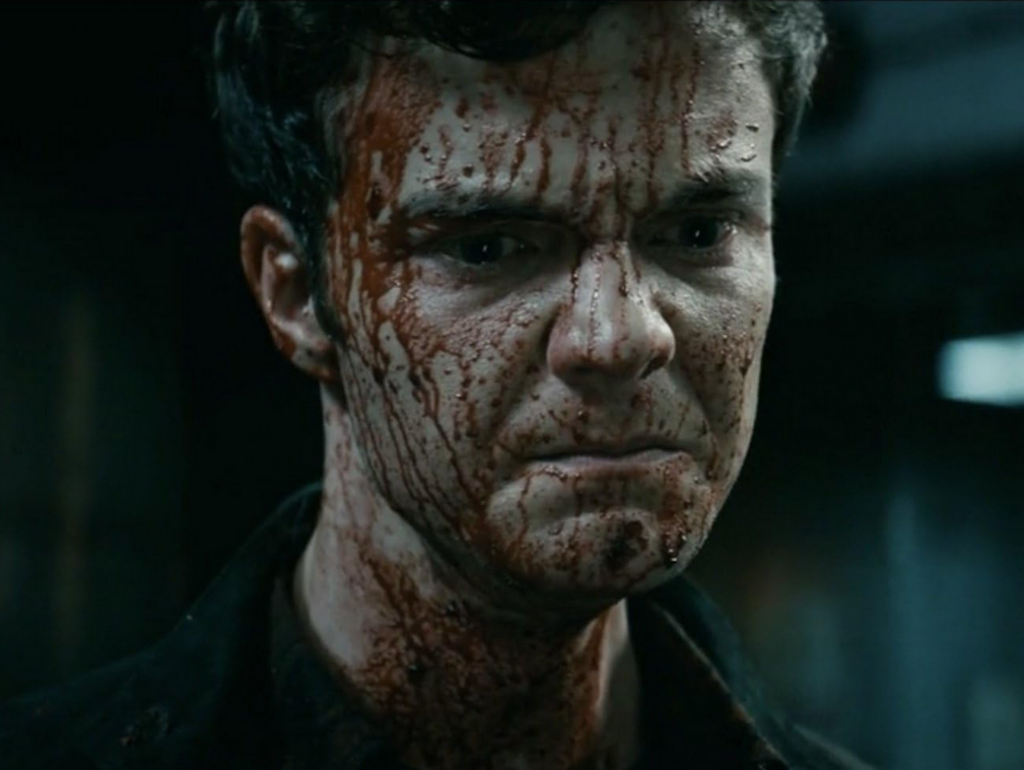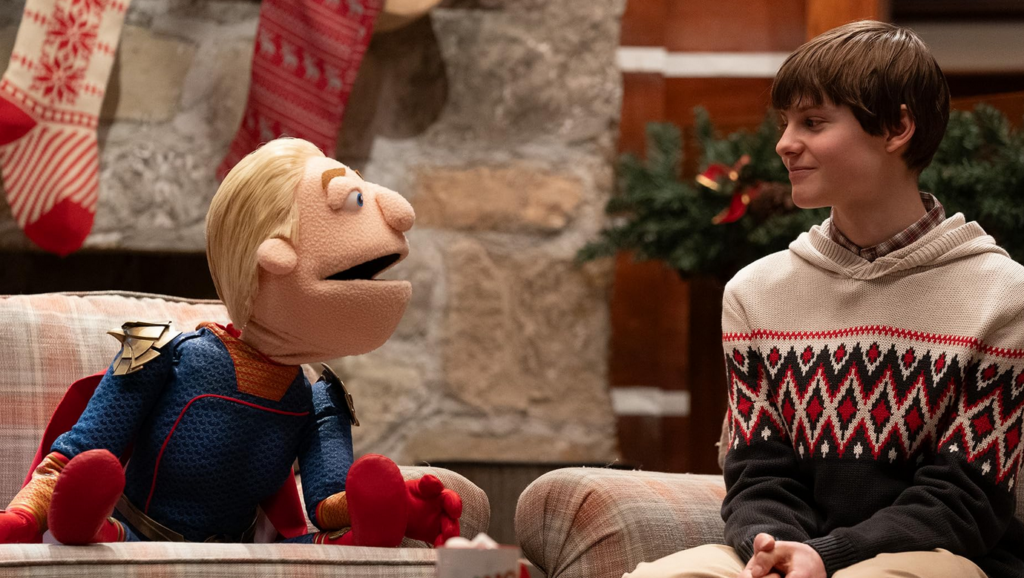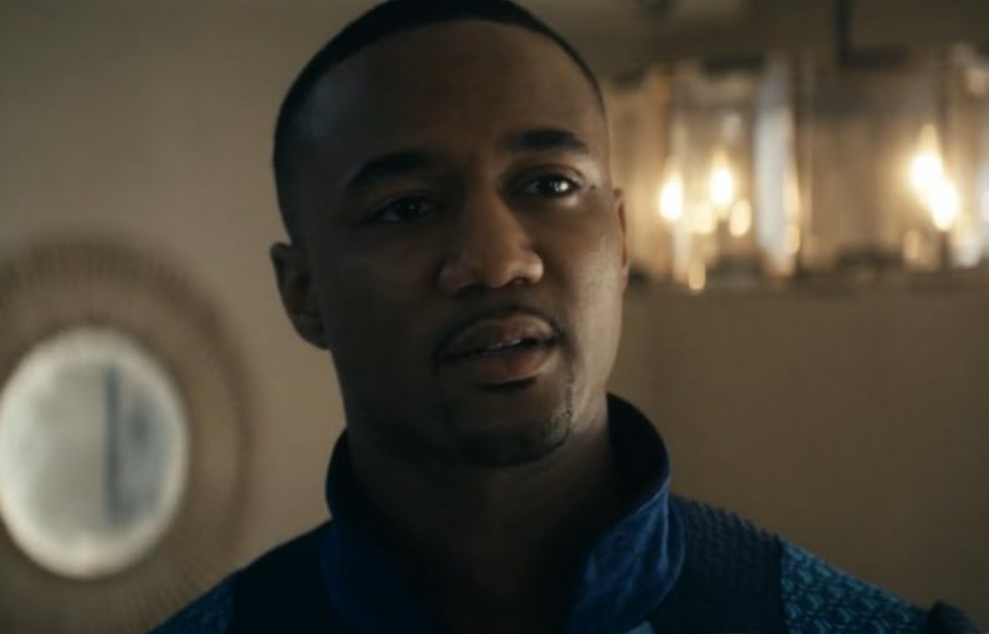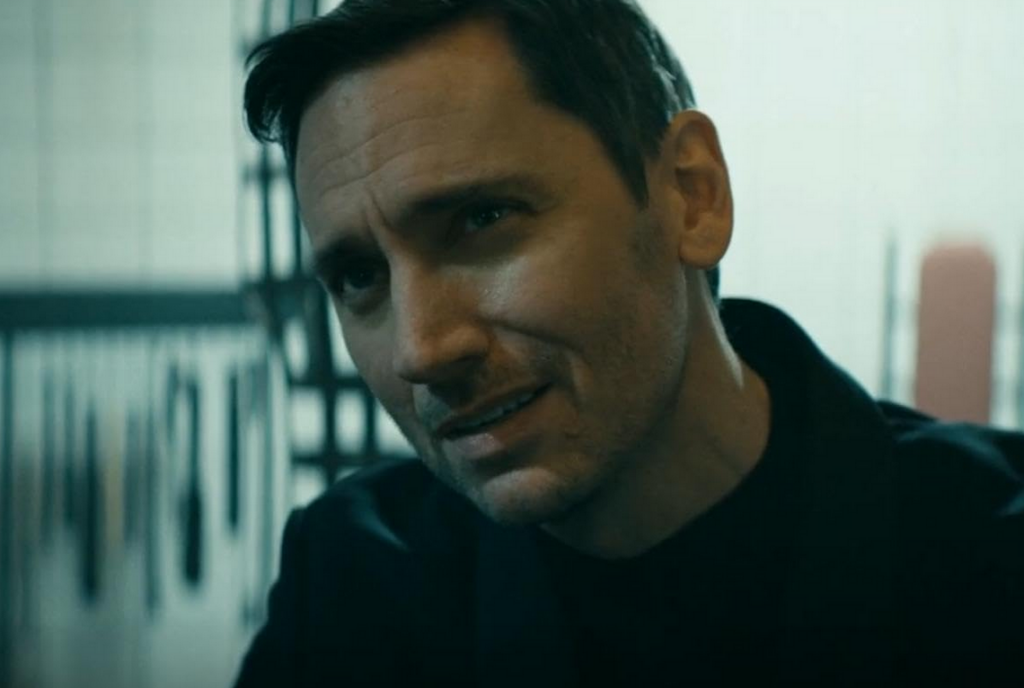
The Stand Miniseries: Part 1: The Plague
More Videos
Published
4 years agoon
By
Court Court
The news keeps spilling out like an open wound of dreadful information, people are stuck at home in quarantine, and horror fans are talking about Captain Trips, aka the superflu, aka the man-made virus in Stephen King’s novel The Stand. This coronavirus thus far is nowhere near as deadly as the superflu. But we can see some parallels between real life and fiction: a collective state of anxiety and helplessness, the governments’ responses (or lack thereof), quickly filling hospitals, no known treatments, the dread of the cough. The Stand is basically the worst-case scenario of our current state of affairs mixed with supernatural elements, including one of King’s most notable villains: The Dark Man.
Some Background
This 1994 miniseries, directed by Mick Garris and written by King himself, is a classic. Some fans love it, some hate it; that is bound to happen with any book-to-screen adaptation. I have a love/hate relationship with the show. There are moments where I find it frightening and thrilling, emotional and, at times, comical. Other times it is completely frustrating and cringeworthy.
The Stand miniseries is six hours long and still, understandably, can’t include everything in the 1152 page uncut book. All that said, I’m not going to compare the show to the book because, despite their relationship, they are two different entities. Rather I will review the show on its own, occasionally pointing out some iotas relating to the novel.
Okay. Enough of my ramblings. Let’s get started.
The Plague
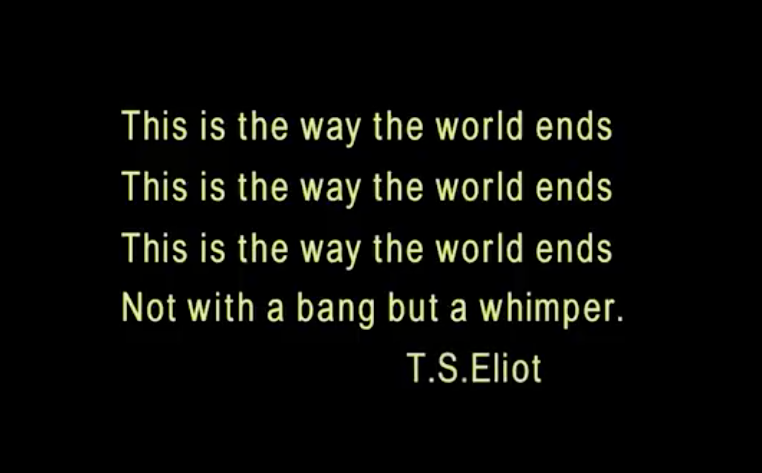
Everything is fine until it isn’t. On a California military base protected by a razor wire fence and officer Charles Campion (Rick McKinnon) in a security booth, a biological virus has breached. Everyone inside the base is dead. Campion, the only survivor, panics and drives as far away as possible, taking his wife Sally (Hope Marie Carlton), their daughter, and the virus with him.
As Campion travels, the virus spreads rapidly. People die left and right. But the government refuses to acknowledge their fault in the matter, downplaying how serious the disease actually is. Citizens riot, desperate for some kind of response. Only when the government starts losing their own members do they recognize the gravity of the situation.
Campion makes it all the way to Arnette, Texas, where he utters his last breath to Stu Redman (Gary Sinse). For weeks, the military holds Stu and others who came in contact with Campion in quarantine. Only Stu survives.
The hospital puts him under many tests until the entire staff acquires the disease and dies. Stu escapes quarantine and runs outside to a new world. As he lays on the grass, trying to take everything in, he has a vision of Abagail Freeman (Ruby Dee), a 108-year-old prophet best known as “Mother Abagail.” Abagail asks him to come see her, to come home. There’s not much time left.
The Rest of the Crew (So Far)
Larry Underwood (Adam Storke), the vain, egotistical rock star who only sees his mother when he needs money. Living in California, he travels to New York and meets Rat Man (Rick Aviles), whose significance has not yet come to light.
Another of our few female protagonists is Frannie Goldsmith (Molly Ringwald). She is compassionate and strong-willed, living with her father and dealing with the pesky admirations of Harold Lauder (Corin Nemec).
Nick Andros (Rob Lowe), a sweet young man who is deaf, non-speaking, and the constant victim of Ray Booth (Patrick Kilpatrick). Nick is the first to meet Abagail.
Lloyd Henreid (Miguel Ferrer) has a career dedicated to committing crimes. While the cops arrest him for murder, he sees a mysterious man perched on a telephone wire. But that man turns out to be a crow.
Kareem Abdul Jabbar plays the Monster Shouter, a minor character who foreshadows the apocalypse and Larry’s fate.
And, finally, out of the shadows in the middle of the night emerges none other than Randall Flagg, The Dark Man (Jamey Sheridan).
“Folks, I’ve just been ordered by my uninvited fascist guests to shut down.”
I adore (adore!) Rae Flowers (Kathy Bates). Her short scene guts me every time. Though the show does not credit Bates, she puts on one hell of a performance as a sardonic radio host who takes no prisoners. We don’t get to see much of her, but she is so well written that it feels like we’ve known her forever.
The Introduction
The Stand starts out with a bang. After Campion drives away, the camera leads us into his booth where we dive into the security footage and land in the military building. Blue Oyster Cult’s “Don’t Fear the Reaper” plays as we float over the myriad of dead bodies piled on top of one another. One man kneels against a door, fingers inches away from the handle while a woman sits straight in her chair, neck cricked to the side, eyes white and dead. A game show is on the TV in one break room, the jovial contestants unaware of their future demises. Lunch trays are splattered across the floor, blood drips down the victims’ mouths. Lights in another break room sputter on and off. There isn’t a single place absent of death.
This scene is the perfect introduction to the series: the arrangement of the bodies, the number of deaths, the music. We are seeing the multitude of this man-made virus and the undoubtable aftermath to come:
The world is astronomically fucked.
Critiques
As with the book, the cast in the miniseries is predominately white and male. One could argue they were recreating what King wrote, but that’s not a good excuse considering creative license exists. And this story is about the apocalypse. You’re telling me all the survivors are mainly white people? No. Just no.
I also want to mention Abagail Freemantle. She is one of the most important characters in the story, perhaps one of King’s most notable ever. And Ruby Dee is amazing in this role. But Mother Abagail as a character is stereotypical towards Black women. (This trait is very common for several Black characters in King’s early works, including The Shining and The Green Mile.) As much as I love The Stand, this stereotype is an issue that is impossible to ignore.
Then there are moments when things get very cheesy. Adam Storke’s acting sometimes leaves something to be desired (e.g. Larry’s reaction when The Monster Shouter tells him “he’s coming for you” looks like Storke just woke up from a nap and forgot he was in a television show). There are some small continuity errors you might catch if you watch very carefully, including the occasional camera in the window.
Oh, and there’s this:
The Verdict
I have some issues with the show, but I still fairly enjoy watching The Stand. There’s something a little bit comforting about the fact that we haven’t gotten as bad as King’s world. It is cheesy, yet also disturbing, action-packed, and exciting. You can watch this episode on YouTube; keep in mind a lot of the music is muted because of copyright (the death montage is completely silent because of “Don’t Fear the Reaper.”).
“The Plague” get’s 3 out of 5 Cthulhu.

Until episode two, check out what else we’re watching here at Haunted MTL.
First image after cover photo from the graphic novel. All other photos from YouTube.
CourtCourt is a writer, horror enthusiast, and may or may not be your favorite human-eating houseplant.

You may like
We have come now to the finale of season four of The Boys. And while it didn’t have the literal blood fireworks I wanted, someone did get ripped in half in the air. So, that’s pretty close.
As a note, I will try to avoid spoilers as much as possible. This ending was a hell of a gut punch that should be experienced as blindly as possible. That being said, I will not be able to avoid spoilers and still give a full legitimate review. Proceed at your own risk.
The story
The main storyline for this episode is the attempted assassination of President-Elect Robert Singer. The Boys join forces with the Secret Service to protect him. But, as we learned last episode, Annie has been replaced with a shapeshifter. A shapeshifter that was welcome not just into Hughie’s anus, but into the protective bunker in which the President-Elect is hiding.
What worked
The first thing I want to discuss about this episode is the ending. But we need to do this carefully.
The important thing here is that the ending breaks your heart on so many levels. So many terrible things are happening to characters that it’s almost hard to keep track. And each moment is significant to each character.
I cannot give a specific example. But no matter who your favorite character is, you’re going to weep for them.
Unless your favorite character is Sage. And this is the next thing that made this episode so fantastic.
I don’t think I’m spoiling anything to say that Sage’s plans worked out exactly as she wanted them to. And she got exactly what she wanted.
What she wanted wasn’t power. It wasn’t money or fame or vengeance. It wasn’t to win the love of anyone. She just wanted to see if she could do it.
That is a terrific, terrifying motivation! Because all she wants is to play a massive game of chess with people as pieces. She doesn’t care about anyone. She just wants to see how many people she can manipulate. She just wants to set things on fire to see if she can.
Fantastic. A plus villain work.
The next thing I want to discuss is a cornerstone of the whole series.
The morality of The Boys shifts through the series. While it’s very much a battle to save the world from overpowered super monsters, it’s also a battle for the souls of our real heroes. And in that battle, there are two warring factors. We have Hughie, always trying to bring everyone up to a better level. And we have Butcher, who has no problem at all hitting rock bottom with a shovel in hand to do some more digging.
In this episode, we saw almost every member of The Boys challenged. Will they rise to their higher angels, or sink with their demons?
On a similar note, I am so glad that the writers kind of addressed my issues with Annie. They did this by having the shapeshifter get right into her face and accuse her of thinking that she’s better than everyone.
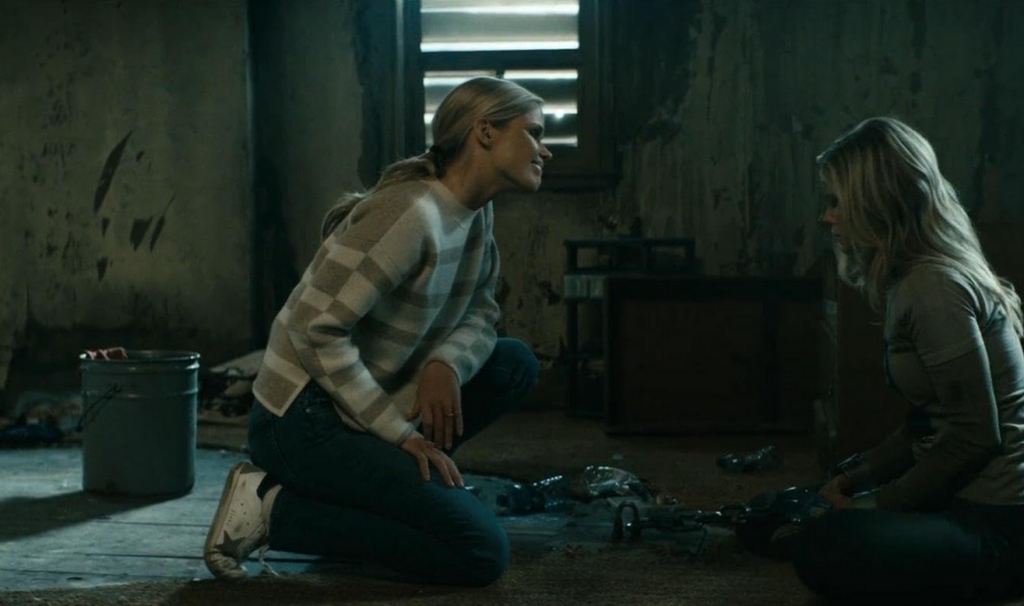
While that was devastating for the character, it was a little cathartic for those of us who felt like Annie was a little too good of a good guy.
What didn’t work
This is a small matter, but it is an issue that I want to address. After Annie finds out that Hughie slept with her doppelganger, she is furious at him.
In addition to this being unfair, it’s also a very cliche element to add. In almost every instance of a lookalike in fiction, there’s a moment where the love interest of the victim is fooled. Or almost fooled. And it’s always the same fight. It’s just played out and predictable. I’m just glad that it didn’t last very long.
Now that we’ve come to the end of the season, I can officially say that it was amazing. The story was deep and rich. The special effects were a stomach-turning good time. The character development was spot-on and satisfying. And, of course, it left me just about gagging to see what happens next. Unfortunately, it looks like we’ll have a bit of a wait. Because as of right now, the fifth season isn’t expected until 2026.

We’ve reached the second to last episode of The Boys, season four. And, as is appropriate for the penultimate episode of any show, things have to get a lot worse before they can get better.
Let’s discuss.
The story
Christmas is coming, and the whole world is getting ready. Ryan, despite being very clear that he didn’t want to appear on any TV shows or movies, has been strong-armed into participating in a Vought puppet Christmas special. He draws the line, though, when asked to sing about turning one’s parents in if they start talking about woke things.
Meanwhile, The Boys are trying to keep each other together. Butcher decides to take Sameer to the rest of the team. He also gets Frenchie out of prison, hoping they can make the Sup virus necessary to finally take down Homelander. Instead, this decision means disaster for one member of the team.
What worked
I first want to talk about Ryan’s speech near the end of the episode. Because it was exactly the moral of this whole story.
Ryan’s dad is a monster. His stepdad is also kind of a monster. But Ryan is a good kid. He cares about people, about family. And while he loves Homelander and Butcher, he doesn’t want to be like them.
Even better, this speech sounded like something a kid would say. Ryan didn’t open his mouth and start sounding like a college student all of a sudden. He sounds like a kid who misses his mom and wants to live up to the good standards she set for him. And I think that’s terrific.
Speaking of Homelander, he shot himself in the foot in this episode. I said earlier in the season that his hubris was going to be his downfall, and I was right. Without Sage, he just has the same weaknesses he’s always had. He’s going to fail because he just isn’t clever enough or patient enough to succeed.
Without Sage, I think a win is in the bag for The Boys. This isn’t to say that Homelander by himself isn’t dangerous. It’s just that he’s more like a wildfire than a controlled burn. He’s going to cause a lot of damage, but not get anything he wants out of it.
More’s the pity for him and everyone else who has to share his world.
Finally, I am thrilled with A-Train’s redemption story. I love that he wants to be a good person not to save himself, but to be a good person. His honest, pure and warm reaction to that little kid smiling at him in the last episode was heartwarming. It changed him in a moment, bringing to light a goodness that he’s been keeping under wraps for a long time.
This, along with Ryan’s courageous speech, proves once again what The Boys does so well. Yes, it’s gruesome. Yes, there’s blood and balls and batshit events. Yes, someone occasionally gets ripped in half. But there is a true human goodness in the story. One that we catch glimpses of. There are good people among the monsters. There is hope for redemption.
What didn’t work
Of course, so few things in this life are perfect, and this episode was no exception. For instance, I was irritated by the insinuation that Butcher cheated on his wife.
That just doesn’t make any sense. We’ve seen flashbacks of Billy and Becca. They were happy. He was happy. He was head over heels for her. And I don’t think it’s realistic or necessary for the character to throw in that he cheated. It does nothing to add to the story, it’s just a weird and offputting moment.
Doesn’t Butcher have enough to hate about himself? Can’t we just give him that at least he was a good husband?
Finally, I kind of hate that we ended up with Annie being caught. It’s just cliche, which is something I don’t normally say about this show. It feels lazy unless they do something very clever with it in the last episode. Which, I suppose, they might.
Next up is the season finale. And with this season being as insane as it has been, I’m expecting nothing short of bloody fireworks. And I mean literal fireworks of blood. At this point, would it surprise anyone?
 (4 / 5)
(4 / 5)
Episode six of The Boys was one of the most surprising episodes of the series so far. And that is certainly saying something. Because this season has so far been bonkers.
The story
Our episode today revolves around a party at Tek Knight’s lovely mansion. Yes, it does look just like Wayne Manor.
The Boys know that Tek Knight is working with Homelander on something, but they don’t know the details. So they decide to send Hughie in to bug the mansion.
Because that’s worked so well the other two times he’s tried to hide a bug!
It should surprise no one that this time goes no better. Hughie finds himself in Tek Knight’s basement. And by that I mean his BDSM dungeon.
Meanwhile, the party upstairs is no less disturbing. Homelander and Sage are trying to convince some well-off political donors to support a cue after the election. When pressed for details on his plan, Homelander freezes. He looks to Sage for help, but she wasn’t recently shot in the head and still in the junk food stage of her healing.
Fortunately, or unfortunately depending on your point of view, Neuman jumps in and saves the day.
What works
If I’m going to say one thing about this episode, it didn’t hold back at all. I didn’t expect them to show a character masturbating, sitting their bare behind on a cake, or spraying breastmilk into someone’s face. But every time I thought they’d cut the scene and let something be left to our imagination, they did not do that.
This is a dangerous move. Whenever you show the monster, you run the risk of them not being scary enough, or gross enough. As Stephen King says in Danse Macabre, to leave this sort of thing to the imagination if the reader makes things so much worse. So when they finally experience the monster, they might say that this isn’t so bad. It could have been so much worse.
But in this case, they managed to avoid that by making the scenes, especially the ones in Tek Knight’s dungeon, so much worse than I imagined it would be.
What doesn’t work
While this was a deeply disturbing episode in many ways, there was one really innocent and sweet moment.
And yes, I did have a problem with it.
Confronted by Firecracker, Annie decides to apologize for spreading rumors about her when they were kids. She tells her that she is genuinely sorry.
And I believe her. I don’t think Firecracker did, but I did.
So why is this an issue? Because I’m starting to think that Annie is maybe too nice. She is too good.
I know that Annie is our good guy. But every one of the other good guys has flaws. Hughie let his pride get in the way and took Temp V. MM hid himself from his daughter instead of teaching her to work through her emotions. Kimiko is far too closed off and has a hard time trusting others. Frenchie numbs himself with drugs. And well, what hasn’t Butcher done?
It is unrealistic that Annie is just so kind and so flawless. We all have shadows in our personalities. We all have weaknesses, we all mess up. We all do things we wish we could take back. The fact that Annie doesn’t seem to have anything like that is not just unrealistic. It’s infantilizing.
Give her some deep dark secrets. Give her something real to regret.
This was a shocking episode, even for someone fairly jaded like me. I wasn’t expecting the sort of weird sexual depravity, though I guess maybe I should have seen it coming. It was dark, upsetting, tense, and funny as hell. And with just two episodes left in the season, I can imagine the stakes are only going to get higher.
 (4 / 5)
(4 / 5)
By the way, if you like my writing you can get my short story, Man In The Woods, on Smashwords and Amazon.


